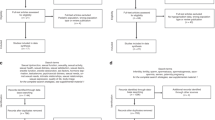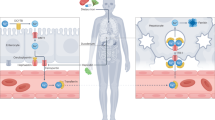Abstract
Physician practice variation may be a barrier to informing hematopoietic cell transplant (HCT) recipients about fertility preservation (FP) options. We surveyed HCT physicians in the United States to evaluate FP knowledge, practices, perceptions and barriers. Of the 1035 physicians invited, 185 completed a 29-item web-survey. Most respondents demonstrated knowledge of FP issues and discussed and felt comfortable discussing FP. However, only 55% referred patients to an infertility specialist. Most did not provide educational materials to patients and only 35% felt that available materials were relevant for HCT. Notable barriers to discussing FP included perception that patients were too ill to delay transplant (63%), patients were already infertile from prior therapy (92%) and time constraints (41%). Pediatric HCT physicians and physicians with access to an infertility specialist were more likely to discuss FP and to discuss FP even when prognosis was poor. On analyses that considered physician demographics, knowledge and perceptions as predictors of referral for FP, access to an infertility specialist and belief that patients were interested in FP were observed to be significant. We highlight variation in HCT physician perceptions and practices regarding FP. Physicians are generally interested in discussing fertility issues with their patients but lack educational materials.
This is a preview of subscription content, access via your institution
Access options
Subscribe to this journal
Receive 12 print issues and online access
$259.00 per year
only $21.58 per issue
Buy this article
- Purchase on Springer Link
- Instant access to full article PDF
Prices may be subject to local taxes which are calculated during checkout



Similar content being viewed by others
References
Lee SJ, Schover LR, Partridge AH, Patrizio P, Wallace WH, Hagerty K et al. American Society of Clinical Oncology recommendations on fertility preservation in cancer patients. J Clin Oncol 2006; 24: 2917–2931.
Carter A, Robison LL, Francisco L, Smith D, Grant M, Baker KS et al. Prevalence of conception and pregnancy outcomes after hematopoietic cell transplantation: report from the Bone Marrow Transplant Survivor Study. Bone Marrow Transplant 2006; 37: 1023–1029.
Gulati SC, Van Poznak C . Pregnancy after bone marrow transplantation. J Clin Oncol 1998; 16: 1978–1985.
Hammond C, Abrams JR, Syrjala KL . Fertility and risk factors for elevated infertility concern in 10-year hematopoietic cell transplant survivors and case-matched controls. J Clin Oncol 2007; 25: 3511–3517.
Salooja N, Szydlo RM, Socie G, Rio B, Chatterjee R, Ljungman P et al. Pregnancy outcomes after peripheral blood or bone marrow transplantation: a retrospective survey. Lancet 2001; 358: 271–276.
Sanders JE, Hawley J, Levy W, Gooley T, Buckner CD, Deeg HJ et al. Pregnancies following high-dose cyclophosphamide with or without high-dose busulfan or total-body irradiation and bone marrow transplantation. Blood 1996; 87: 3045–3052.
Loren AW, Chow E, Jacobsohn DA, Gilleece M, Halter J, Joshi S et al. Pregnancy after hematopoietic cell transplantation: a report from the late effects working committee of the Center for International Blood and Marrow Transplant Research (CIBMTR). Biol Blood Marrow Transplant 17: 157–166.
Borgmann-Staudt A, Rendtorff R, Reinmuth S, Hohmann C, Keil T, Schuster FR et al. Fertility after allogeneic haematopoietic stem cell transplantation in childhood and adolescence. Bone Marrow Transplant 2012; 47: 271–276.
Scanlon M, Blaes A, Geller M, Majhail NS, Lindgren B, Haddad T . Patient satisfaction with physician discussions of treatment impact on fertility, menopause and sexual health among pre-menopausal women with cancer. J Cancer 2012; 3: 217–225.
Quinn GP, Vadaparampil ST, Lee JH, Jacobsen PB, Bepler G, Lancaster J et al. Physician referral for fertility preservation in oncology patients: a national study of practice behaviors. J Clin Oncol 2009; 27: 5952–5957.
Schover LR, Brey K, Lichtin A, Lipshultz LI, Jeha S . Oncologists' attitudes and practices regarding banking sperm before cancer treatment. J Clin Oncol 2002; 20: 1890–1897.
Knapp CA, Quinn GP . Healthcare provider perspectives on fertility preservation for cancer patients. Cancer Treat Res 2010; 156: 391–401.
Kohler TS, Kondapalli LA, Shah A, Chan S, Woodruff TK, Brannigan RE . Results from the survey for preservation of adolescent reproduction (SPARE) study: gender disparity in delivery of fertility preservation message to adolescents with cancer. J Assist Reprod Genet 2011; 28: 269–277.
Quinn GP, Vadaparampil ST, Gwede CK, Miree C, King LM, Clayton HB et al. Discussion of fertility preservation with newly diagnosed patients: oncologists' views. J Cancer Surviv 2007; 1: 146–155.
Vadaparampil S, Quinn G, King L, Wilson C, Nieder M . Barriers to fertility preservation among pediatric oncologists. Patient Educ Couns 2008; 72: 402–410.
Forman EJ, Anders CK, Behera MA . A nationwide survey of oncologists regarding treatment-related infertility and fertility preservation in female cancer patients. Fertil Steril 2010; 94: 1652–1656.
Martins Y, Lederman RI, Lowenstein CL, Joffe S, Neville BA, Hastings BT et al. Increasing response rates from physicians in oncology research: a structured literature review and data from a recent physician survey. Br J Cancer 2012; 106: 1021–1026.
VanGeest JB, Johnson TP, Welch VL . Methodologies for improving response rates in surveys of physicians: a systematic review. Eval Health Prof 2007; 30: 303–321.
Hohmann C, Borgmann-Staudt A, Rendtorff R, Reinmuth S, Holzhausen S, Willich SN et al. Patient counselling on the risk of infertility and its impact on childhood cancer survivors: results from a national survey. J Psychosoc Oncol 2011; 29: 274–285.
Acknowledgements
The Center for International Blood and Marrow Transplant Research is supported by Public Health Service Grant/Cooperative Agreement U24-CA76518 from the National Cancer Institute, the National Heart, Lung and Blood Institute and the National Institute of Allergy and Infectious Diseases ; a Grant/Cooperative Agreement 5U01HL069294 from NHLBI and NCI; a contract HHSH234200637015C with Health Resources and Services Administration (HRSA/DHHS); two Grants N00014-06-1-0704 and N00014-08-1-0058 from the Office of Naval Research; and grants from Allos, Inc.; Amgen, Inc.; Angioblast; Anonymous donation to the Medical College of Wisconsin; Ariad; Be the Match Foundation; Blue Cross and Blue Shield Association; Buchanan Family Foundation; CaridianBCT; Celgene Corporation; CellGenix, GmbH; Children’s Leukemia Research Association; Fresenius-Biotech North America, Inc.; Gamida Cell Teva Joint Venture Ltd.; Genentech, Inc.; Genzyme Corporation; GlaxoSmithKline; HistoGenetics, Inc.; Kiadis Pharma; The Leukemia and Lymphoma Society; The Medical College of Wisconsin; Merck & Co, Inc.; Millennium: The Takeda Oncology Co.; Milliman USA, Inc.; Miltenyi Biotec, Inc.; National Marrow Donor Program; Optum Healthcare Solutions, Inc.; Osiris Therapeutics, Inc.; Otsuka America Pharmaceutical, Inc.; RemedyMD; Sanofi; Seattle Genetics; Sigma-Tau Pharmaceuticals; Soligenix, Inc.; StemCyte, A Global Cord Blood Therapeutics Co; Stemsoft Software, Inc.; Swedish Orphan Biovitrum; Tarix Pharmaceuticals; Teva Neuroscience, Inc.; THERAKOS, Inc.; and Wellpoint, Inc. The views expressed in this article do not reflect the official policy or position of the National Institute of Health, the Department of the Navy, the Department of Defense, or any other agency of the US Government.
Author information
Authors and Affiliations
Corresponding author
Ethics declarations
Competing interests
The authors declare no conflict of interest.
Additional information
Supplementary Information accompanies the paper on Bone Marrow Transplantation website
Supplementary information
Rights and permissions
About this article
Cite this article
Loren, A., Brazauskas, R., Chow, E. et al. Physician perceptions and practice patterns regarding fertility preservation in hematopoietic cell transplant recipients. Bone Marrow Transplant 48, 1091–1097 (2013). https://doi.org/10.1038/bmt.2013.13
Received:
Revised:
Accepted:
Published:
Issue Date:
DOI: https://doi.org/10.1038/bmt.2013.13
Keywords
This article is cited by
-
Effect of a web-based fertility preservation training program for medical professionals in Japan
International Journal of Clinical Oncology (2023)
-
The effect of hematopoietic stem cell transplantation on fertility and strategies for improvement
Bone Marrow Transplantation (2022)
-
Impact of legislation and public funding on oncofertility: a survey of Canadian, French and Moroccan pediatric hematologists/oncologists
BMC Medical Ethics (2020)
-
Inflammatory bowel disease patient perceptions of diagnostic and monitoring tests and procedures
BMC Gastroenterology (2019)
-
Fertility preservation practices in pediatric and adolescent cancer patients undergoing HSCT in Europe: a population-based survey
Bone Marrow Transplantation (2017)



